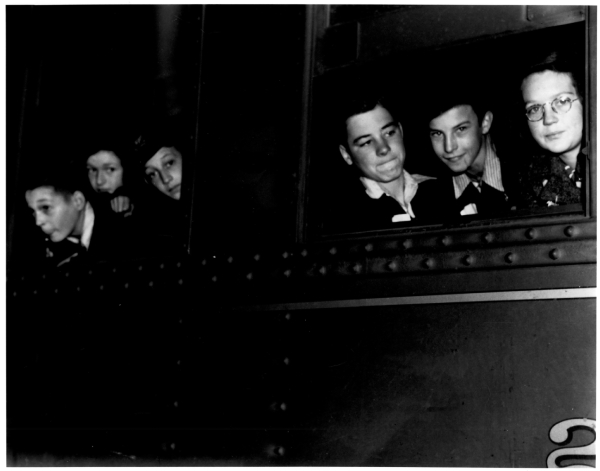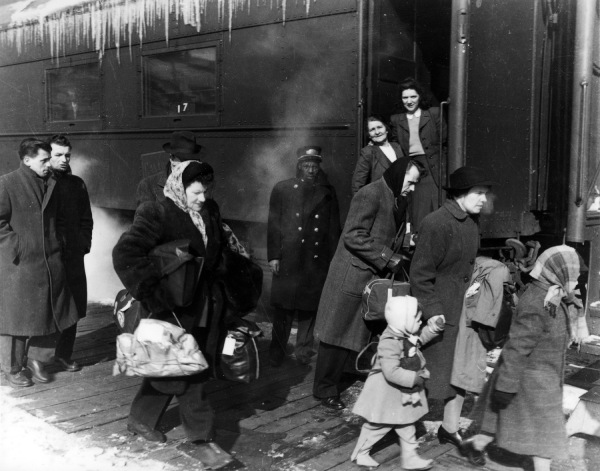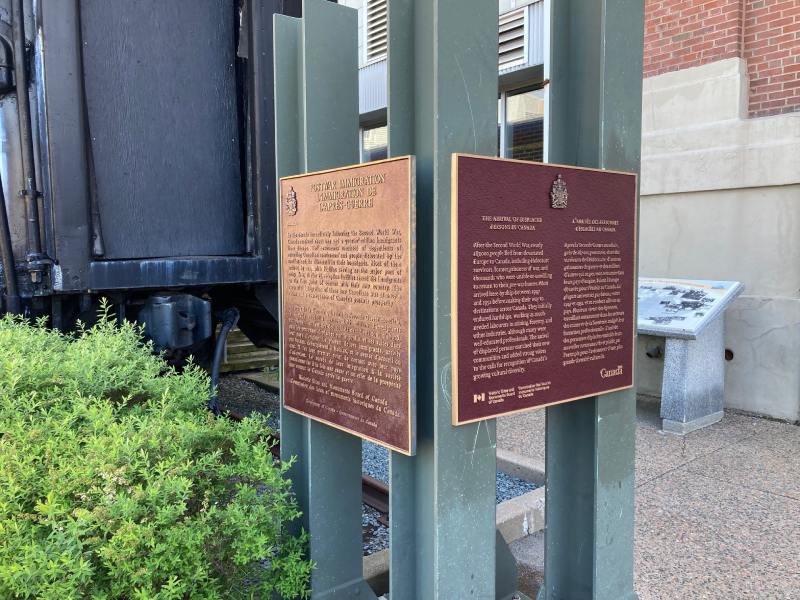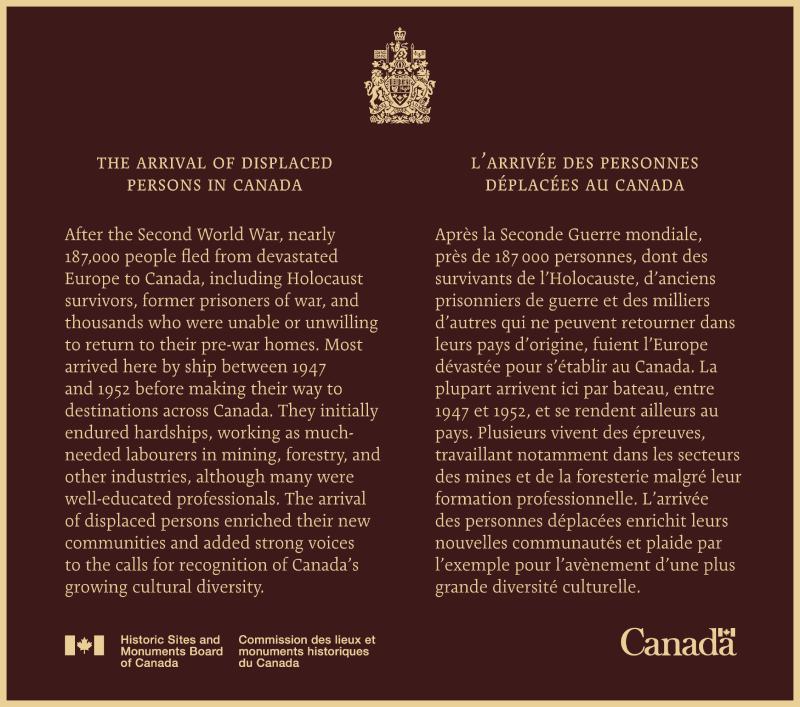The Arrival of Displaced Persons in Canada, 1945-1951 National Historic Event
The arrival of displaced persons in Canada between 1945 and 1951 was designated a national historic event in 2014.
Historical importance: The arrival of more than 157,000 political refugees who were known as displaced persons or “DPs.”
Commemorative plaque: Canadian Museum of Immigration at Pier 21, 1055 Marginal Road, Halifax, Nova Scotia B3H 4P7Footnote 1
After the Second World War, nearly 187,000 people fled from devastated Europe to Canada, including Holocaust survivors, former prisoners of war, and thousands who were unable or unwilling to return to their pre-war homes. Most arrived here by ship between 1947 and 1952 before making their way to destinations across Canada. They initially endured hardships, working as much needed labourers in mining, forestry, and other industries, although many were well-educated professionals. The arrival of displaced persons enriched their new communities and added strong voices to the calls for recognition of Canada’s growing cultural diversity.
The arrival of displaced persons in Canada, 1945-1951
After the Second World War, more than 157,000 refugees, known as displaced persons, and sometimes referred to as “DPs,” came to Canada. They seized the opportunity to start over again, found new homes in this country and added to the multi-cultural complexion of Canada.
The term “displaced person” was defined as any person who was displaced because of the Second World War. Many came to Canada from Europe during the period between 1945, when the war ended, until 1951 when the International Refugee Organization (IRO) closed its displaced persons camps. For Canada, the arrival of this large wave of people marked a notable chapter in the nation’s immigration history. While the largest groups of displaced persons to come were Poles and Ukrainians, there were also a significant number of Holocaust survivors and Jews as well as Croatians, Czechoslovakians, Estonians, Hungarians, Latvians, Lithuanians, Romanians and Yugoslavians. Some of these people had been either forced labourers or prisoners of war during the Nazi occupation of many parts of Eastern Europe, while other displaced persons left their homelands later, as new governments based on Soviet communism were formed.

© Canada Science and Technology Museum Archives / CN002833

© Bud Glunz / National Film Board of Canada, Phototheque collection / Library and Archives Canada / C-049400

© Canada Science and Technology Museum Archives / CN000597

© Canada Science and Technology Museum Archives / CN000448
Displaced persons, as the largest group of 20th-century refugees to come to Canada, collectively alerted Canadians to the plight of stateless peoples and helped pave the way for more generous immigration policies and practices. Moreover, as displaced persons made their homes in Canada, they contributed to a cultural renaissance in their ethno-cultural communities, and eventually added strong voices to the calls for recognition of Canada’s growing cultural diversity.

Persons displaced in the aftermath of the Second World War ended up in Displaced Persons Camps in Europe run by the United Nations Relief and Rehabilitation Agency (UNRRA) and the IRO. Although initially reluctant to accept these refugees, the Canadian government announced a program in 1947 to bring displaced persons to Canada as contract workers. Most signed one-year contracts to meet specific labour needs in Canada’s burgeoning economy, particularly in mining, logging, agriculture, needle trades and domestic service. This large and diverse group of refugees, many of whom were well-educated professionals, contrasted with earlier waves of immigrants who were primarily workers or farmers. Most displaced persons fulfilled the terms of their contracts in low paying, often remote jobs, and were initially forced to leave their families behind. While their adjustment to Canada was often difficult, many eventually found work that was more in keeping with their experience and training, and were re-united with their families. Most moved to major Canadian cities, where they joined ethnic neighbourhoods.
Backgrounder last update: 2022-05-30
The National Program of Historical Commemoration relies on the participation of Canadians in the identification of places, events and persons of national historic significance. Any member of the public can nominate a topic for consideration by the Historic Sites and Monuments Board of Canada.
- Date modified :
